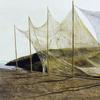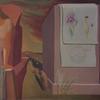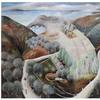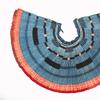The Autry Presents Revolutionary Vision: Group f/64 and Richard Misrach Photographs From the Bank of America Collection
- LOS ANGELES, California
- /
- April 13, 2016
Founded in 1932, Group f/64 staked a claim for photography as an autonomous art form, with aesthetics that embraced its innate mechanical properties. Led by Ansel Adams and Edward Weston, this informal association of Bay Area photographers expanded the medium beyond a painterly, pictorial style toward images of rich clarity, crisp graphics, and dramatic tonal depth. The career of Richard Misrach represents another watershed moment for photography. Beginning in the 1970s, Misrach used color and large-scale formats to contrast the beauty of the Western landscape with evidence of its environmental decay. Revolutionary Vision sets these two important developments side by side, offering viewers a new context for assessing their relative achievements, in dialogue here for the first time.
On view at the Autry Museum of the American West from June 4, 2016, through January 8, 2017, Revolutionary Vision displays nearly 90 images drawn from the Bank of America Collection, which represents the work of f/64 and Richard Misrach in-depth. The exhibition also incorporates interactive photo booths that encourage visitors to experience the effect of different camera lens apertures.
“We are pleased to partner with Bank of America to exhibit so many masterworks of photography,” said W. Richard West, Jr., the Autry's President and CEO. “Showcasing the innovations of two generations of California-based artists, this exhibition includes memorable portrayals of the diverse and dynamic landscapes of the American West.”
Revolutionary Vision is provided by Bank of America’s Art in our Communities™ program. Through Art in our Communities, Bank of America has transformed its collection into a unique community resource for museums and nonprofit galleries.
“We’re proud to deepen our commitment to the arts by continuing our partnership with one of our local cultural treasures, the Autry Museum of the American West, by presenting Revolutionary Vision: Group f/64 and Richard Misrach Photographs From the Bank of America Collection,” said Raul Anaya, Los Angeles Market President, Bank of America. “At Bank of America, our support of the arts reflects our belief that the arts matter: they are a powerful tool that can provide pathways to greater cultural understanding that can help economies thrive, help individuals connect with each other and across cultures, and educate and enrich societies.”
Revolutionary Vision presents works by seminal members of Group f/64: Ansel Adams, Imogen Cunningham, Willard Van Dyke, Brett Weston, and Edward Weston. An informal association of photographers devoted to promoting a new direction in photography, Group f/64 formed in 1932 as a challenge to Pictorialism, a popular movement that favored soft-focus images and hand-manipulated prints. Named after the large-format camera aperture, which captures a maximum depth of field, Group f/64 argued that it was the camera’s ability to produce sharp contrasts and to capture crisp, graphic forms that made it a uniquely modern medium. The members of Group f/64 also believed that subject was less important than method, stating in their manifesto that “pure photography is defined as possessing no qualities of technic [sic], composition or idea, derivative of any other art form.”
The f/64 photographers addressed a range of subjects, consistently calling attention to the abstract nature of everyday objects, buildings, and landscapes. Edward Weston and Imogen Cunningham filled their frames with plants and vegetables, accenting their curves and angles. Weston’s nudes were as depersonalized as his botanicals. Van Dyke’s industrial scenes highlighted the geometry of smokestacks, and Brett Weston identified patterns in natural and man-made landscapes alike. Ansel Adams’ renowned Western scenes reveal his fascination with the natural world, captured in monumental views of Yosemite and intimate tableaus of New Mexico aspens. While the exhibition includes several portraits, these also show as much attention to composition as to their subjects’ personalities.
f/64 disbanded in 1935, as Californians, along with the rest of the nation, struggled under the effects of the Great Depression. Although many of the works in Revolutionary Vision were created after the group dissolved, its members remained faithful to the f/64 manifesto.
Richard Misrach (born in 1949) is one of America’s foremost contemporary photographers associated with present-day Western landscapes. He began his career in the turbulent social and political environment of the 1960s, and his work continues to accentuate the many–often contradictory–expectations and uses placed upon landscape.
As Misrach acknowledged in the San Francisco Chronicle, “My initial interest in photography was the great f/64 landscape tradition of the West Coast, but soon my interest in the aesthetics of photography melded with my political awakening…”
Like Group f/64, Richard Misrach has played an important role in the history of photography. Beginning in the 1970s, he began producing large-scale colored prints capable of vying with abstract paintings for space and attention on the museum wall. Visually gorgeous and often politically scathing, Misrach photographs capitalize on the powers of photography to romanticize and beautify while simultaneously commenting on the effects of environmental overuse, tourism and industry, and even war. Many of Misrach’s best-known series are featured in the exhibition, including Clouds, Desert Cantos, Desert Fires, and the Salton Sea.
“Viewing the works of Misrach and his f/64 progenitors together is an eye-opening experience, revealing the debts, inspirations, and divergences of the post-Modern generation to and from its Modernist roots,” explains Amy Scott, the Autry’s Chief Curator and Marilyn B. and Calvin B. Gross Curator of Visual Arts. “While each individual body of work represents an important artistic phenomenon, together they offer a conversation with one another on the complex and, at times, contradictory notions of aesthetic and environmental purity in the twentieth- and twenty-first-century American West.”


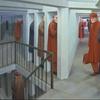

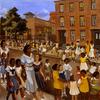
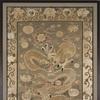
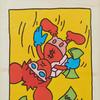
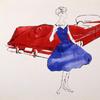


100x100_c.jpg)
